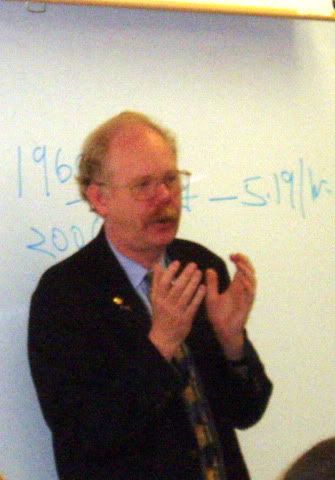Justice Lewis Powell’s decision (See post on August 26, 2007) provided the foundation to expand the definition of diversity.
Powell’s definition of diversity meant, well, about anything: “The file of a particular black applicant may be examined for his potential contribution to diversity without the factor of race being decisive when compared, for example, with that of an applicant identified as an Italian-American if the latter is thought to exhibit qualities more likely to promote beneficial educational pluralism. Such qualities could include exceptional personal talents, unique work or service experience, leadership potential, maturity, demonstrated compassion, a history of overcoming disadvantage, ability to communicate with the poor, or other qualifications deemed important. In short, an admissions program operated in this way is flexible enough to consider all pertinent elements same weight. Indeed, the weight attributed to a particular quality may vary from year to year…”
In the last generation, institutions, writers and employers have developed definitions of diversity. The next two posts will list some these definitions and then conclude with an analysis of what all this means.
Here is one from the University of Nebraska:
“Diversity is the multiplicity of people, cultures and ideas that contribute to the richness and variety of life. Diversity broadly encompasses the mixture of similarities and differences along several dimensions: race, national origin, ability, religion, sexual orientation, age and gender. It includes values, cultures, concepts, learning styles and perceptions that individuals possess. By its very nature, diversity fosters inclusiveness, encourages the exchange of new ideas, improves decision-making, and broadens the scope of problem-solving.”
Here is one from a writer:
“This book defines diversity simply as significant differences among people, though we will concentrate on race, culture, gender, sexual orientation, age and physical abilities. Some definitions include differences in ethnicity, nation of origin, class, religion, learning and communication styles, where people come from, and occupation as aspects of diversity. Source: William Sonnenschein, The Diversity Toolkit: How you can Build and Benefit From A Diverse Workforce (Lincolnwood, Chicago: Contemporary Books, 1997, 1999), p. 3
The point on both of these is the broadness almost to include anything on what "diversity" means. More examples will follow and then, some analysis.
Sunday, September 9, 2007
Subscribe to:
Post Comments (Atom)

No comments:
Post a Comment